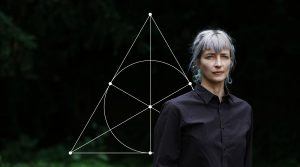
Natalie Wolchover in Quanta:
Proof surfaced in 1898 that the reals, complex numbers, quaternions and octonions are the only kinds of numbers that can be added, subtracted, multiplied and divided. The first three of these “division algebras” would soon lay the mathematical foundation for 20th-century physics, with real numbers appearing ubiquitously, complex numbers providing the math of quantum mechanics, and quaternions underlying Albert Einstein’s special theory of relativity. This has led many researchers to wonder about the last and least-understood division algebra. Might the octonions hold secrets of the universe?
“Octonions are to physics what the Sirens were to Ulysses,” Pierre Ramond, a particle physicist and string theorist at the University of Florida, said in an email.
Günaydin, the Penn State professor, was a graduate student at Yale in 1973 when he and his advisor Feza Gürsey found a surprising link between the octonions and the strong force, which binds quarks together inside atomic nuclei. An initial flurry of interest in the finding didn’t last. Everyone at the time was puzzling over the Standard Model of particle physics — the set of equations describing the known elementary particles and their interactions via the strong, weak and electromagnetic forces (all the fundamental forces except gravity). But rather than seek mathematical answers to the Standard Model’s mysteries, most physicists placed their hopes in high-energy particle colliders and other experiments, expecting additional particles to show up and lead the way beyond the Standard Model to a deeper description of reality. They “imagined that the next bit of progress will come from some new pieces being dropped onto the table, [rather than] from thinking harder about the pieces we already have,” said Latham Boyle, a theoretical physicist at the Perimeter Institute of Theoretical Physics in Waterloo, Canada.
Decades on, no particles beyond those of the Standard Model have been found. Meanwhile, the strange beauty of the octonions has continued to attract the occasional independent-minded researcher, including Furey, the Canadian grad student who visited Günaydin four years ago.
More here.
